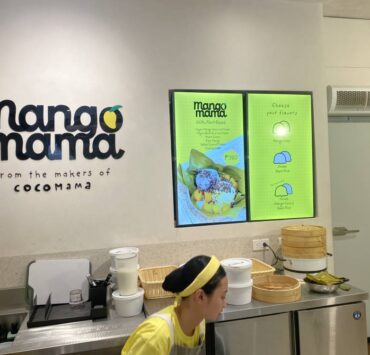New vegan Filipino cookbook reworks the classics

Filipino food and veganism rarely hang out at the same table, but that’s about to change, thanks to Ria Elciario-McKeown’s bold new cookbook, “Make It Plant-Based! Filipino” (out May 13, 2025), which dives into the heart of Filipino home cooking.
This vibrant addition to the “Make It Plant-Based!” cookbook series is more than just a vegan swapfest. It’s a cultural love letter to the meatcentric meals Elciario-McKeown grew up with, reworked to be plant-powered. With over 60 recipes, from sweet, sticky rice cakes to savory noodle stir-fries, she proves you don’t need animal parts to pull off pancit.
As a Filipino-Canadian writer and recipe developer, Elciario-McKeown brings a dual lens of nostalgia and innovation. She delivers the hits like sinangag (garlic fried rice), lumpiang gulay (veggie spring rolls), and a sticky adobo sauce that clings lovingly to roasted mushrooms.
But she doesn’t just recite a recipe; she dishes out backstories, cultural cues, and kitchen tips. It’s like getting a cooking lesson from your tita who’s gone full vegan and still hasn’t lost her edge.
I received an advanced copy of the book, tried some recipes, and served the output to my guinea pigs, er, kids.
Let’s start with the most chaotic meal of the day: breakfast.

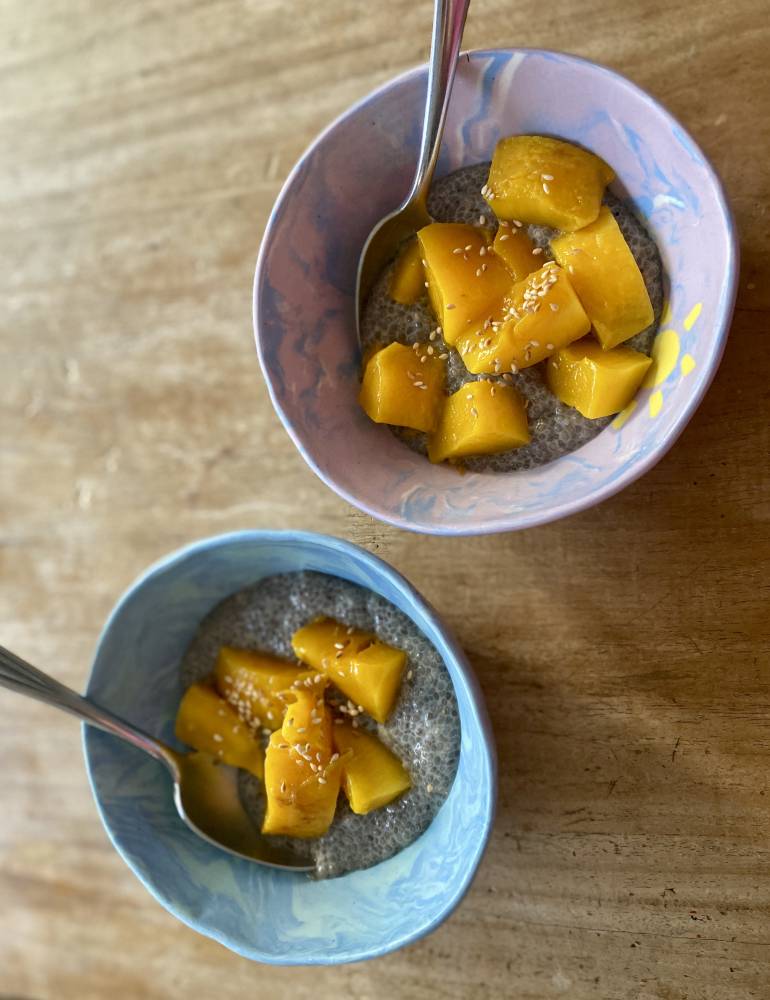
Mango and coconut chia pudding: This tropical twist on the mango sticky rice classic is a breakfast win for time-crunched mornings and anyone who enjoys their nutrition in pudding form. It’s bright, creamy, and delicious… the first time. Too many dark chia dots made it look more goth than breakfast by day two.
Champorado (chocolate porridge): If dessert-for-breakfast is your thing (no judgment here), this cocoa-laced rice porridge hits the spot. We usually just pop open a packet of White King champorado mix, so making this from scratch was quite the effort. It cooked up a lot sooner and thicker than the recipe said it would, so the kids got a kick out of the ultra-thick consistency, likening it to “chocolate biko” and flipping their bowls like they were at the place where they sell Blizzards. Sweet, rich, and deeply satisfying. It was easy to thin out when reheating with some water anyway.

Staple
Garlic fried rice (sinangag): A staple of every silog breakfast combo, this version is a solid base, though mine leaned more fiber-forward than flavorful, thanks to frozen brown rice. If you want the full umami bomb, stick with white rice and double down on the garlic.
Taho (silken tofu with syrup and sago). A sweet, silken tofu dream with chewy sago pearls and a rich syrup. The balance of textures was chef’s kiss, though the tofu-to-topping ratio needs some tweaking (I used a tube of Japanese tofu). The recipe made way more sago and arnibal than we needed, and too little tofu. It had street-cred taste-wise, though the vanilla elevated the flavor a bit.
Filipino cuisine’s fast-and-furious cooking style lends itself perfectly to vegan adaptations. Case in point:
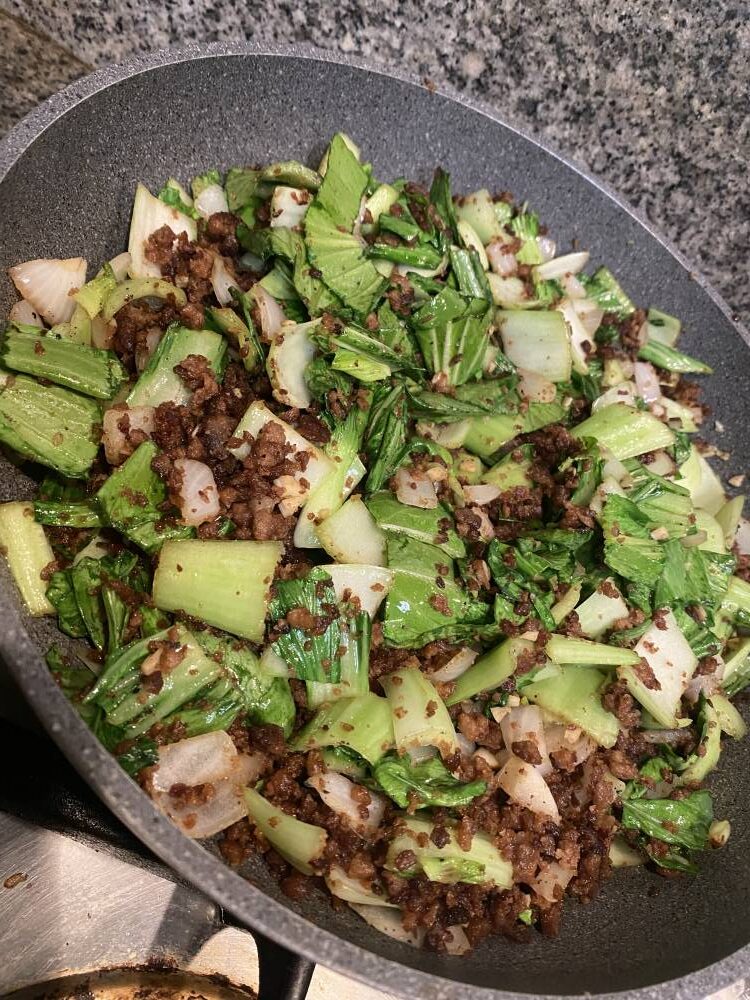
Ginisang pechay at tokwa (stir-fried bok choy with tofu): Bok choy’s speed-cook appeal meets crispy tofu in a soy sauce-soaked stir-fry that’s ready in minutes. Add chili crisp, and you’ve got a weeknight dinner worth repeating.
Pressed for time, I swapped in Green Rebel mince for the tofu, and no one complained. The meal was well-received by the family and an easy way to get our dark, leafy greens in; I’d make it again.
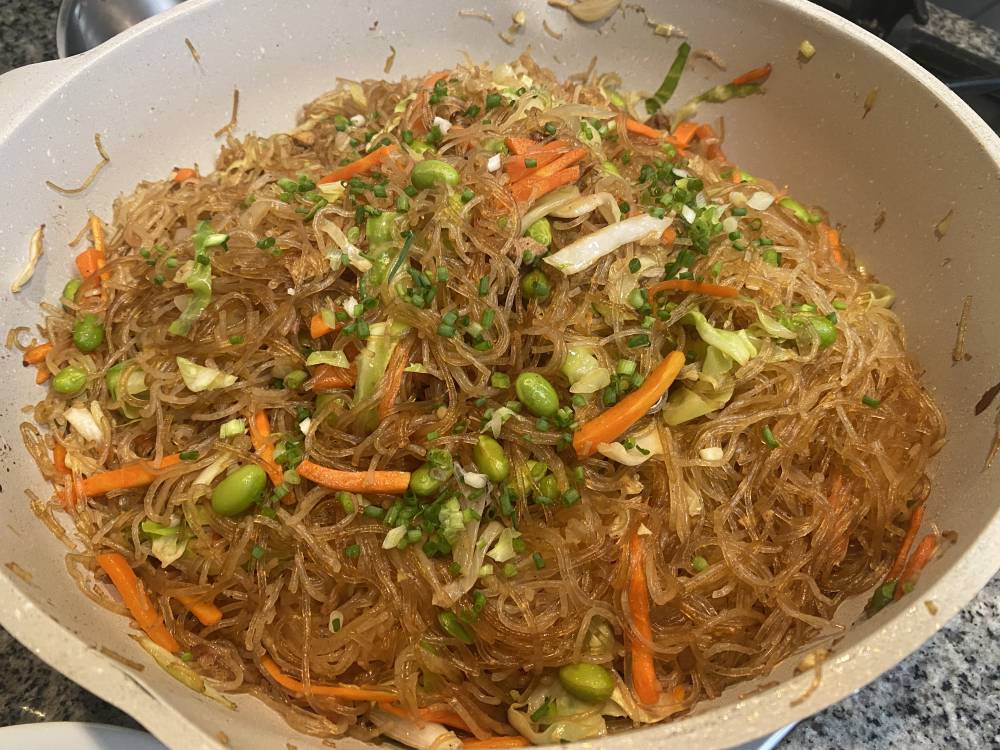
Pancit guisado (stir-fried noodles): A party staple that’s supposed to symbolize long life, though this one didn’t have much longevity with my crew unless we generously re-seasoned it. Toss in extra soy sauce, sesame oil, and protein like edamame, and suddenly it’s a main character dish.
Sizzling mushroom and tofu sisig: Served this on brown rice with a side of fresh mangoes, and it was a hit with the family. Cooking it in a cast iron pan gave it legit sizzle. Once more, I used Green Rebel mince over tofu as it’s what I had, and omitted the chili to make it kid-friendly. A drizzle of Knorr seasoning lent it a more authentic flavor.

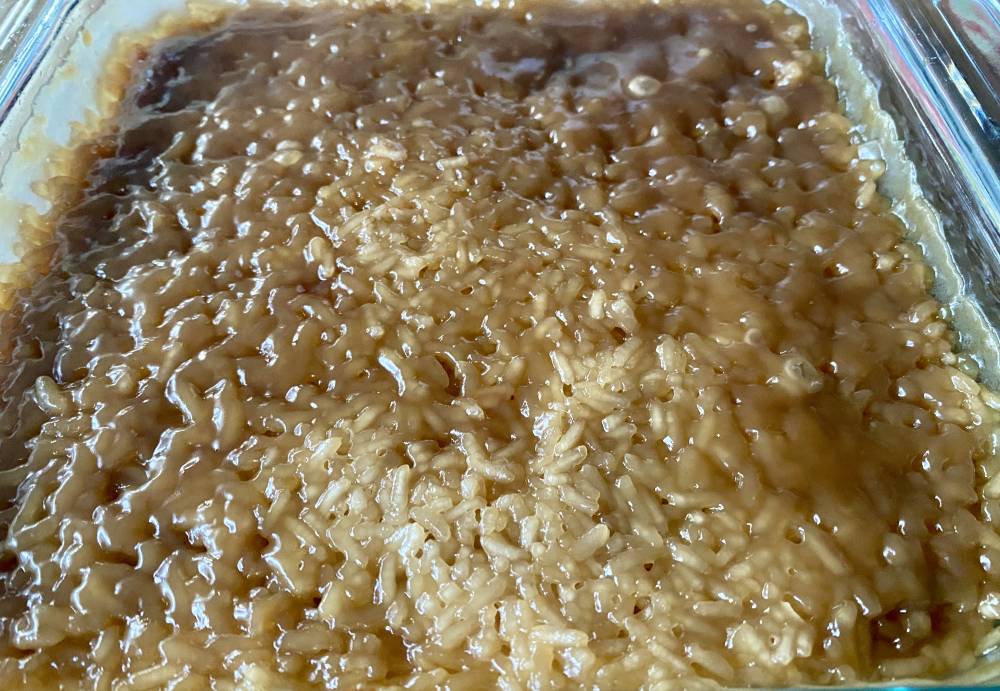
Sweet endings
Biko (sticky coconut rice cake): Equal parts meditative and maddening to make, this traditional dessert demands patience and stirring—lots of it. But the pay-off? A nutty, caramelized rice cake that even my toughest critics devoured.
I usually make this with a rice cooker, dumping all the ingredients in. Doing it as the recipe laid out was very tedious and time-consuming. I had to watch the pot so the coconut cream mix wouldn’t boil over and had to continuously stir and watch the rice in a separate pot, which required more liquid as it was close to burning. Everyone said it was worth the wait, but I won’t make it again in this scorching summer heat (maybe in the cooler months).
Mangga sago (strawberry mango sago): Cold, creamy, and very pink, in the best way. This was delicious, and the pink makes it prettier than the usual mango shake in a bowl in Chinese restaurants. A fruity take on the mango sago dessert soup with bonus strawberries for flair. It’s like a tropical smoothie bowl dressed up for a party.
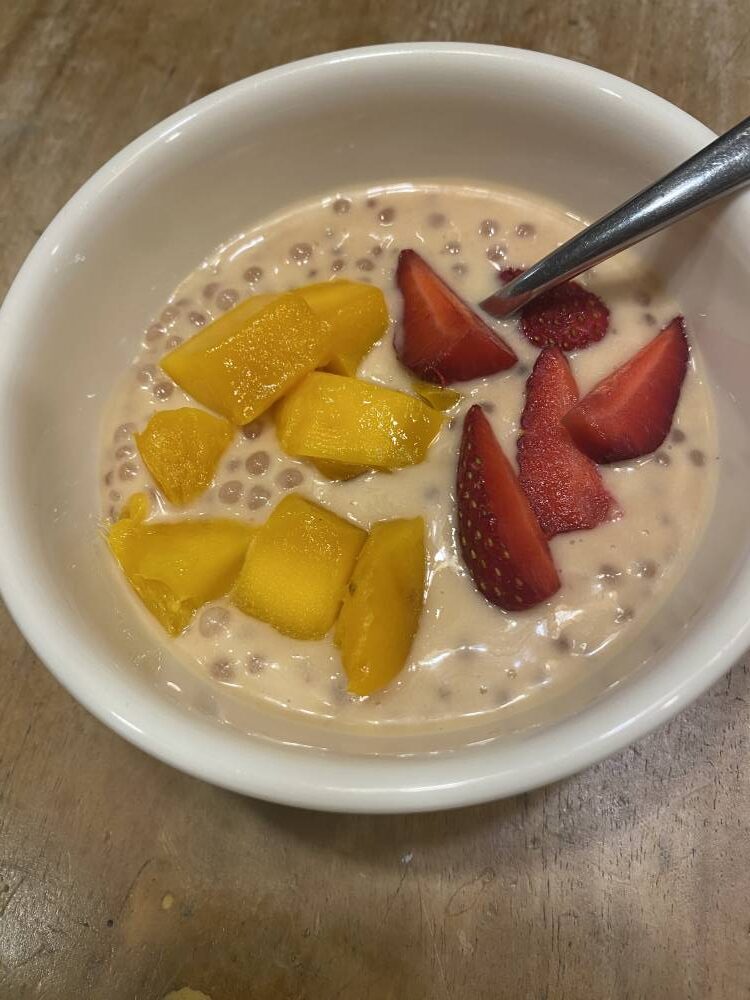
Elciario-McKeown’s recipes balance familiarity with freshness, tradition with tweaks. They’re inviting without being intimidating, and they celebrate the Filipino flavor “trifecta” of sweet, salty, sour, without leaning too heavily on processed vegan stand-ins.
There’s heart in these pages, alongside Pinoy-specific sidebars like The Kamayan Way and practical guides like how to roll lumpia. Whether you’re new to vegan cooking or just hankering for the flavors of your childhood with a lighter footprint, “Make It Plant-Based! Filipino” makes the journey joyful and doable.
Don’t expect exact replicas of meat-based dishes; this book isn’t trying to fake it. It’s reimagining them with purpose, and it mostly succeeds.
Will every recipe be a hit with your family? Maybe not. But that’s part of the charm. You try, you tweak, you laugh, you flip your bowl upside down like a champ. In a world of meat-heavy nostalgia, this book proves Filipino food doesn’t lose its soul; just the cruelty.















